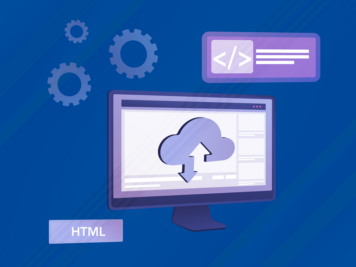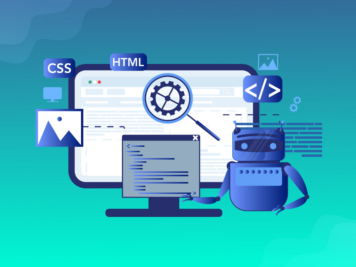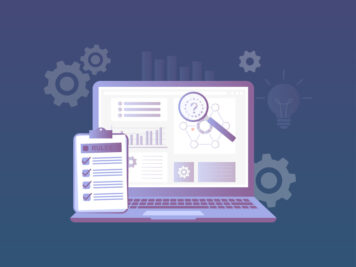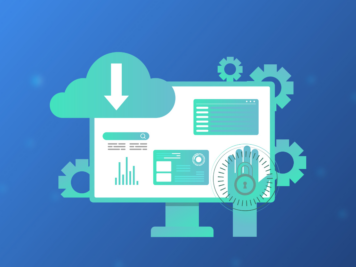In 2010, the news of Blockbuster—a former leader in the video rental industry and a mature-stage company—filing for bankruptcy didn’t startle many. The company resisted digital transformation, failed to modernize its legacy infrastructure, and made no investment in streaming technology.
A mature-stage company crosses many hurdles, such as achieving product-market fit, generating revenue, and scaling teams. These make software development for startups difficult. But these achievements don’t guarantee the top spot forever. The race to dominate the market never truly ends. Take Netflix as an example. Netflix seized the digital shift and capitalized on the lack of competition to become the undisputed leader in streaming.
When a mature-stage company grows, it experiences new and complex technological challenges. Effectively addressing these challenges is crucial for sustaining growth, maintaining innovation, and staying competitive. So, to keep mature-stage decision-makers updated, we have discussed 6 major technological challenges and provided their solutions.
Mature-stage startup technological challenges
Sustainable growth is a major milestone for mature-stage startup companies. To achieve this, the process of software development for startups must have building differentiators and modernizing architecture as a part of long-term strategy.
Complications with Legacy System
Legacy systems are known for their agility, scalability, and security challenges. Application modernization is the only solution. However, on average, application modernization takes around 16 months and can cost around $1.5 million. Many mature-stage companies choose not to migrate from legacy systems as they don’t want to spare bandwidth for such a costly shift. This decision might favor them in the short term, but it adds to tech debts in the long run.
Application modernization is also not easy. Around 80% of product owners reported failing at least once. The process requires extensive planning, proper tools, and skilled people who can do it. However, it is inevitable, as outdated technologies can slow down innovation and make integrations with newer technologies difficult.
Scalability and Performance Bottlenecks
Software development for startups varies across different growth stages. Mature-stage startups do not grow at the speed of growth-stage startups. They widen their operational horizons and pivot to open different revenue streams, increasing both user bases and data volumes. Existing systems struggle to handle this influx from different directions and create performance bottlenecks, which lead to system failures.
Slack’s initial rapid growth is a good example. Its backend was a monolithic PHP application supported by a MySQL database. As the user number grew, complexities in operations also started manifesting, creating bottlenecks. The company implemented a sharded database architecture using Vitess to mitigate issues, allow horizontal scaling, and improve performance under heavy loads.
Security and Compliance Risks
Imagine a straight rope and a flat rectangular plate under heavy fire. Which one is likely to get hit the most? Of course, the flat rectangular plate has a greater surface area than the rope. Similarly, when a company expands and its interactions with diverse mediums increase, they become more susceptible to cybersecurity threats.
Avoiding such things requires strict regulatory compliance as these data breaches can cause irreparable damage to an organization’s reputation and trigger financial losses. Uber had to pay $148 million in a cover-up settlement for a badly mismanaged data breach in 2016.
Complexities in Data Management and AI Integration
Data could be diverse, including texts, images, transactional records, and others. Extracting a meaningful pattern from them is crucial to making informed business decisions. This extraction is impossible without robust infrastructure, advanced analytics tools, and skilled personnel to handle data integration, storage, and real-time analysis. But this is not the end. Ensuring data quality and consistency across various sources is also difficult, as inaccuracies can lead to flawed AI outputs and misguided strategies.
Walmart has envisioned this challenge a long time ago. This retail giant makes over a million transactions of structured and unstructured data every hour, and its volume goes to petabytes. The company needs actionable insights from this data to forecast demand, optimize pricing, and manage inventory effectively. Analyzing this massive influx of data is only possible with advanced AI algorithms.
Talent Acquisition and Retention Difficulties
Software development for startups often experiences a major talent crunch, and this has become even more evident since the pandemic. In that year, technological paradigms began shifting rapidly—and they haven’t slowed down since. This shift has created a massive gap between evolving tech requirements and the availability of professionals who can manage them. The demand for specialized expertise is soaring, but the existing infrastructure for training engineers is insufficient. Additionally, the speed of upskilling does not keep pace with the rapid evolution of technology. These challenges have impacted engineering teams across companies, making the race to secure top talent fiercer than ever.
At the same time, employees have become more mindful of what they expect from their companies. Disgruntled workers following Google’s massive layoffs a couple of years ago echoed this sentiment, highlighting growing concerns about job security and career growth. As a result, retaining talent has become just as challenging as hiring it. The combination of talent shortages and high attrition poses a serious hurdle for companies, especially when planning for expansion.
Maintaining Innovation in a Competitive Landscape
The fundamental dilemma of any mature company is: how to maintain the stability that has fueled their success while simultaneously embracing innovation to stay competitive. They can’t act like startups designed for rapid experimentation and risk-taking. Established companies have structured operations, legacy systems, and a large customer base to consider. Their existing revenue streams and business models are often built on tried-and-tested methods. They make them resistant to change. However, industries evolve and disruptive startups emerge. If these companies don’t also innovate, they might lose relevance.
Mature companies also face significant challenges from emerging technologies as they force an upheaval in their approach to growth. Adopting new technologies often requires cultural shifts, investments in research and development, and the willingness to pivot when necessary. Innovation efforts can also be slowed down by bureaucracy, fear of failure, or resistance from stakeholders who prioritize consistent profits over bold moves.
Solutions for Mature-Stage Startup Technological Challenges
Each of these challenges has multiple solutions. Engineering teams may have to tweak them a bit to suit the exact requirements of mature-stage companies.
Adopt Modernization
It is difficult for a mature-stage startup to modernize everything overnight. Rapid change can lead to severe downtimes and consume a massive amount of resources. It can also cause customer dissatisfaction and disrupt revenue streams. Instead, companies can take an incremental approach, upgrading one component at a time to minimize disruptions.
At the same time, companies should consider tech debt early on. Keeping technology updated can simplify future migrations and make integrations easier. Transitioning from monolithic architectures to microservices can improve scalability and agility. If a company is working with external teams, having a dashboard for complete visibility is crucial.
Moving to a cloud-based infrastructure enhances flexibility, reduces maintenance costs, and improves resource management. However, wasted resources in cloud-based solutions can be a concern. Incremental subscription costs can also impact revenue. Companies need to be strategic and choose a hybrid solution based on their specific use cases.
Ensure Scalability and Performance
Efficient resource management is crucial for handling varying workloads during software development for startups, especially for applications that experience unpredictable traffic spikes. We experienced a similar problem while working for an e-commerce platform. They came to us for solutions to counter massive spikes during Black Friday Sale, Thanksgiving, and Christmas. Load balancing and auto-scaling were our strategies to ensure optimal performance and cost efficiency. Load balancing distributes incoming traffic across multiple servers, preventing any single server from becoming a bottleneck. Auto-scaling dynamically adjusts computing resources based on demand, scaling up during peak usage and down during idle periods.
Managing large-scale data effectively requires a robust database management strategy. Traditional relational databases often struggle with the sheer volume and velocity of modern data, making NoSQL or distributed databases a better choice. Optimized database management enhances query performance, ensures scalability, and supports real-time analytics, which is critical for applications requiring fast data processing.
Edge computing reduces latency and bandwidth usage. Instead of processing all data in a centralized cloud server, edge computing pushes computation closer to the user—on local devices, gateways, or edge servers. This approach significantly improves application speed, particularly for time-sensitive applications like IoT devices, video streaming, and autonomous vehicles. This decentralized processing model boosts efficiency and strengthens data privacy by keeping sensitive information closer to its source.
Deploy Multi-Layered Security
Both insiders and outsiders can cause a data breach. In 2022, a former unhappy Cash App employee stole data of millions of its users. With increasing cyber threats, organizations must think of a multi-layered defense. They can adopt a Zero Trust Architecture (ZTA) to ensure robust security. Zero Trust assumes no implicit trust in any user—inside or outside the organization. Every access request is verified using multi-factor authentication, device security checks, and continuous monitoring. This approach minimizes the risk of insider threats, credential theft, and unauthorized access. Zero Trust significantly enhances an organization’s security posture by enforcing least-privilege access and strict identity verification, especially in cloud-based and remote work environments.
Companies must conduct regular security audits to identify and mitigate vulnerabilities. These audits ensure that security protocols align with industry standards and regulatory requirements. AI can be a great addition. AI-driven threat detectors can proactively identify cyber threats, analyze vast amounts of network activity in real time for anomalies and potential attacks before they escalate. AI-driven security solutions can automate threat response and reduce the time needed to contain breaches.
Implement Efficient Data Management and AI Integration Practices
Data lakes serve as centralized repositories capable of storing vast amounts of raw, unstructured, and structured data. They allow organizations to retain information in their native format until needed for analysis. This flexibility enables data scientists and analysts to perform analytics tasks like real-time processing and machine learning applications.
Organizations can also optimize data warehouses for storing structured data and facilitating complex queries and business intelligence operations. With data lakes and warehouses, organizations can create a comprehensive data ecosystem that caters to various analytical needs. This will enhance decision-making processes and operational efficiency.
With AI-driven decision-making, organizations can anticipate market trends, personalize customer experiences, and automate routine tasks. Actions like these can increase efficiency and competitiveness. However, the effectiveness of AI and ML models depends on the quality and governance of the underlying data. That is why implementing robust data governance policies can help ensure data quality, security, and compliance with regulatory standards.
Bridge Talent Gaps
Hiring people aligned with the product vision is important to reduce drop-out rates. Misalignment creates dissatisfaction among employees and bottlenecks in their growth. During the interview process, this mapping can be done by clarifying key responsibilities and the growth path to ensure smooth software development for startups. Adopting AI in recruitment can also help with candidate sorting and onboarding.
Investing in upskilling and reskilling programs is crucial for organizations as it will help them match their resources with the evolving tech pace. These initiatives enhance employees’ competencies, bolster job satisfaction, and improve retention. Companies prioritizing continuous learning can maintain a competitive edge in rapidly evolving industries. PwC is a great example. The company has invested $3 billion in its “New World, New Skills” program to train its employees in AI, data analytics, and other emerging technologies.
Remote and hybrid work models expand the talent pool and cater to the growing demand for work-life balance. However, managing distributed teams requires robust collaboration tools and clear communication protocols. Companies can also consider collaboration with offshore tech teams, as they come with varied tech expertise, reduce hiring talent problems, and save bandwidth for more pressing issues.
Don’t Stop Innovating
Internal innovation labs enable organizations to cultivate dedicated teams focused on experimenting with emerging technologies and driving innovation. Such practices help stay ahead of the curve. These labs allow companies to explore cutting-edge solutions without disrupting core business operations. For instance, Microsoft’s Garage encourages employees to explore their passion projects and fosters a culture of creativity and continuous improvement.
Open-source collaborations, strategic partnerships, and acquisitions help organizations to outperform competitors. Open-source communities allow companies to leverage collective expertise, accelerate development processes, and adapt to technological advancements. For example, AstraZeneca collaborates with external researchers to discover next-generation therapeutics under its Open Innovation program.
Conclusion
Mature-stage companies face unique and evolving tech challenges. The right strategies can ensure that software development for startups doesn’t hit any snags. They can help companies continue to scale, innovate, and stay secure. These organizations can ensure sustained growth and industry leadership by embracing modernization, optimizing performance, enhancing security, leveraging AI, and investing in talent.









